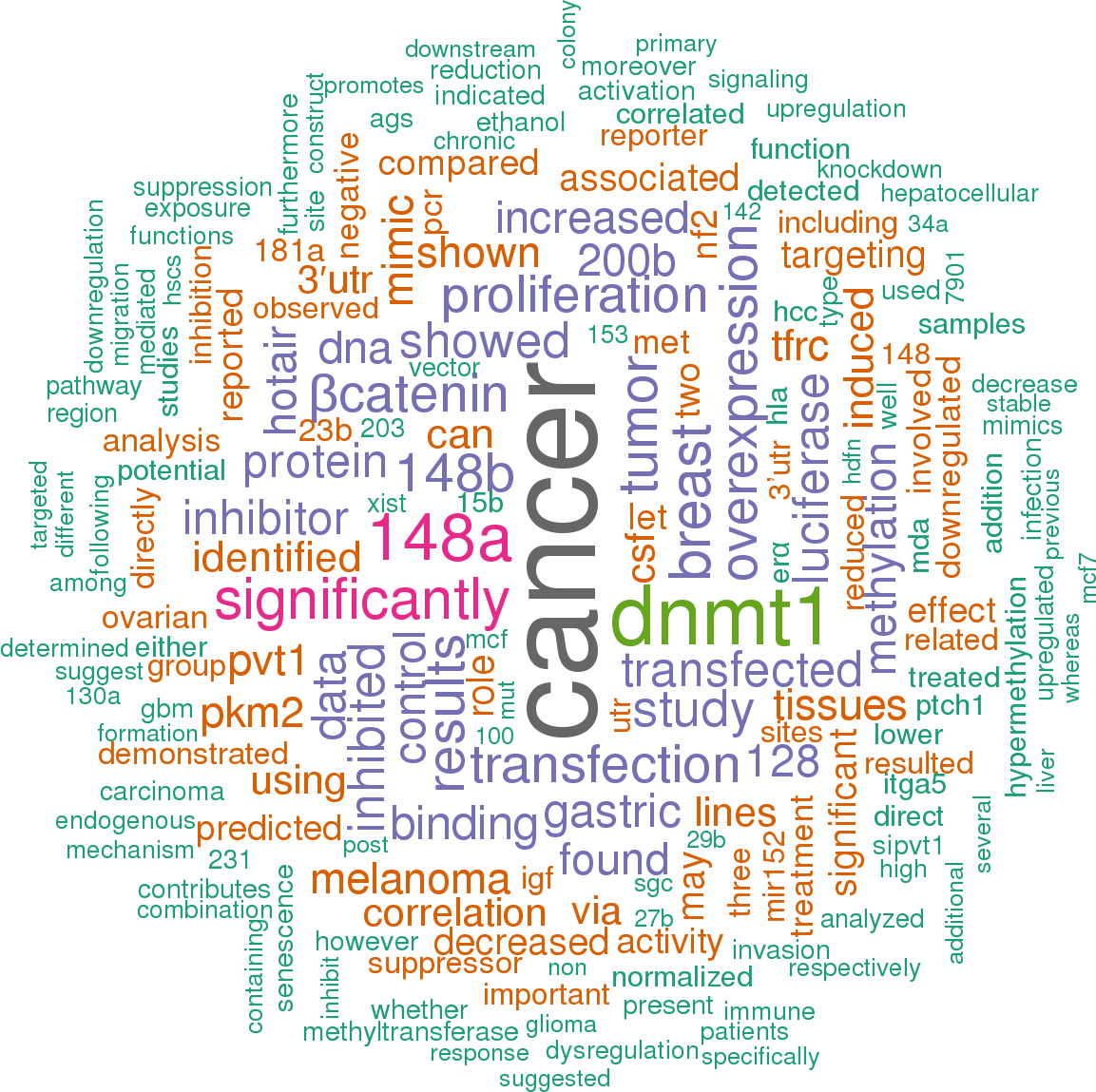Accession
MI0000462
Symbol
HGNC:
MIR152
Description
Homo sapiens
hsa-mir-152 precursor miRNA mir-148
Gene
family?
family?
RF00248;
mir-148
Summary
Caution, this is an AI generated summary based on literature. This may have errors. ?
MIR152 is a microRNA whose expression levels were observed to return to control levels in cells exposed to lipopolysaccharide (LPS) when treated with MK1903, as opposed to cells treated with LPS alone or the vehicle (veh) group [PMC9994484]. This suggests that MK1903 may have a regulatory effect on MIR152 expression in the context of LPS exposure. Additionally, MIR152 is implicated in liver epithelial-to-mesenchymal transition (EMT) as it can be competitively bound by the long non-coding RNA plasmacytoma variant translocation 1 (PVT1), which indicates a potential role for MIR152 in liver EMT processes [PMC8990740].
Literature search

146 open access papers mention hsa-mir-152
(888 sentences)
(888 sentences)
Sequence
277008
reads,
600
reads per million, 150 experiments
ugucccccccggcccAGGUUCUGUGAUACACUCCGACUcgggcucuggagcagUCAGUGCAUGACAGAACUUGGgcccggaaggacc
.((((..((.((((((((((((((.((.((((..((((...(((....))))))))))).)).)))))))))))))).))..)))).
.((((..((.((((((((((((((.((.((((..((((...(((....))))))))))).)).)))))))))))))).))..)))).
Structure
u cc c G A CC cgg c gucc cc ggcccAGGUUCUGU AU CACU GACU gcu u |||| || |||||||||||||| || |||| |||| ||| cagg gg ccgGGUUCAAGACA UA GUGA CUga cga g c aa c G C -- --- g
Annotation confidence
High
Do you think this miRNA is real?
Comments
This miRNA sequence is predicted based on homology to a verified miRNA from mouse [1], later verified in human [2].
Genome context
chr17: 48037161-48037247 [-]
Clustered miRNAs
1 other miRNA is < 10 kb from hsa-mir-152
| Name | Accession | Chromosome | Start | End | Strand | Confidence |
|---|
Disease association
hsa-mir-152 is associated with one or more human diseases in the Human microRNA Disease Database
| Disease | Description | Category | PubMed ID |
|---|
Mature hsa-miR-152-3p
| Accession | MIMAT0000438 |
| Description | Homo sapiens hsa-miR-152-3p mature miRNA |
| Sequence | 54 - UCAGUGCAUGACAGAACUUGG - 74 |
| Evidence |
experimental
cloned [2-3], Illumina [4-5] |
| Database links |



|
| Predicted targets |


|
Mature hsa-miR-152-5p
| Accession | MIMAT0026479 |
| Description | Homo sapiens hsa-miR-152-5p mature miRNA |
| Sequence | 16 - AGGUUCUGUGAUACACUCCGACU - 38 |
| Evidence |
experimental
Illumina [5] |
References
|



